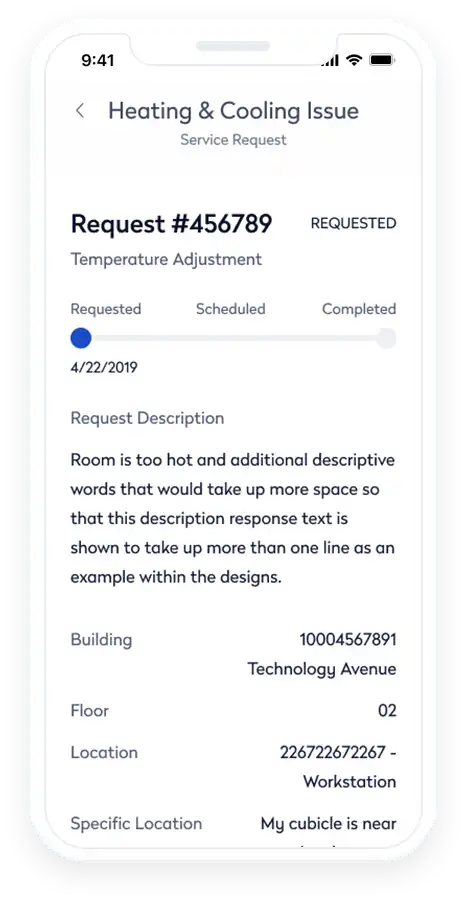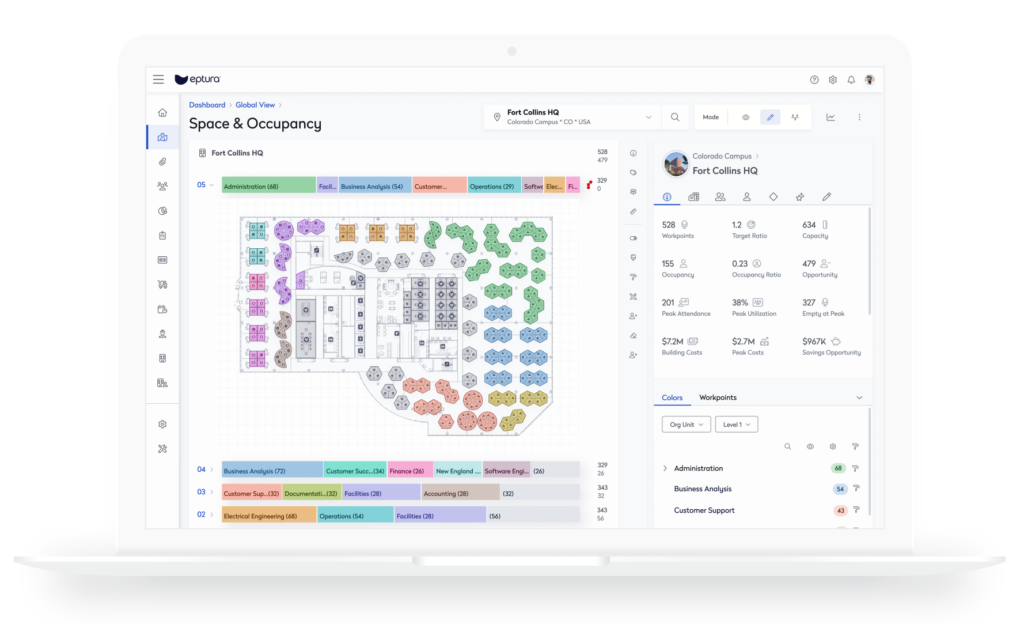
Convincing senior management to invest in workplace technology can feel like an uphill battle, especially in large enterprises where competing priorities and budget constraints often dominate strategic discussions. Yet, as facility managers and IT leaders know, the right Integrated Workplace Management System (IWMS) can deliver transformative results, from optimizing space utilization to driving workflow efficiency.
So how do you overcome resistance and make a compelling case for investment in worktech? The answer lies in demonstrating clear, quantifiable benefits that align with your organization’s strategic goals while addressing pain points senior leaders care about most: cost savings, operational efficiency, and future-proofing the business.
The roadblocks: Why resistance exists
Before diving into the benefits of IWMS, it’s important to understand the reasons behind executive hesitation. Senior leaders often resist investing in new technology because of:
- Budget concerns: The perceived high cost of implementing new systems can be a deterrent, especially when budgets are tight.
- Uncertainty about ROI: Without clear metrics, decision-makers may struggle to see how IWMS will provide tangible benefits.
- Change fatigue: Enterprises already dealing with digital transformation may view another technology implementation as disruptive.
- Lack of awareness: Executives unfamiliar with workplace technology may not fully grasp its potential to streamline operations and enhance decision-making.
Acknowledging these concerns upfront allows you to frame your arguments in a way that directly addresses them.
The case for IWMS: Turning skeptics into advocates
1. Quantify the ROI: Dollars and data speak loudest
Executives want to see numbers. Show how IWMS can deliver measurable cost savings and productivity gains. For instance:
- Space optimization: Demonstrate how tools like Eptura Workplace can analyze occupancy data to identify underutilized spaces, enabling you to reduce real estate costs by consolidating or repurposing areas.
- Energy efficiency: Highlight how automated systems can monitor and adjust lighting, heating, and cooling based on occupancy, leading to lower utility bills.
- Streamlined maintenance: Explain how predictive maintenance capabilities reduce costly equipment failures and downtime.
Use case studies and industry benchmarks to support your argument. For example, companies using IWMS have reported reducing space costs by up to 20% and maintenance expenses by as much as 15%.

2. Highlight workflow efficiency
In a large enterprise, inefficiencies in workflow can ripple across departments, costing time and money. IWMS streamlines operations by integrating disparate systems, centralizing data, and automating manual tasks.
Imagine a scenario where facility teams can schedule maintenance, IT can allocate resources, and HR can manage employee seating — all from one unified platform.
When presenting this to senior leaders, emphasize how these efficiencies translate to better employee productivity. For example:
- Time savings: Automating routine tasks like room booking or work order submissions can free up valuable hours for more strategic work.
- Error reduction: Centralized data minimizes human error, ensuring decisions are based on accurate, real-time insights.
3. Align with strategic goals
Senior management isn’t just concerned with operational details — they’re focused on the bigger picture. Tie IWMS investment to your company’s overarching goals:
- Sustainability: If your organization has ESG commitments, show how IWMS can support energy tracking, waste reduction, and compliance with green building standards.
- Employee experience: With hybrid work on the rise, highlight how IWMS enhances employee satisfaction by enabling flexibility, such as hot-desking and seamless remote collaboration.
- Risk mitigation: Stress the importance of centralized data for compliance and disaster recovery. In regulated industries, IWMS can be a game-changer for audits and reporting.
By aligning IWMS with these high-level objectives, you’ll position it as a strategic enabler rather than a line-item expense.
4. Address the fear of change
One of the most common barriers to adopting new technology is the fear of disruption and change management. Executives may worry that implementation will be too complex, require extensive training, or interfere with ongoing operations.
Dispel these concerns by emphasizing the scalability and user-friendly design of modern IWMS platforms. Explain how phased rollouts, robust training programs, and dedicated support teams ensure a smooth transition. Share testimonials from similar organizations that successfully implemented IWMS without disrupting business as usual.
5. Showcase real-world success stories
Nothing persuades executives like proof of concept. Share examples of enterprises that have achieved measurable benefits with IWMS. For instance:
- A multinational corporation reduced real estate costs by 18% after implementing IWMS to optimize space utilization.
- A healthcare provider streamlined maintenance workflows, cutting equipment downtime by 25% and improving patient outcomes.
- A tech company used IWMS data to enhance its hybrid work strategy, boosting employee engagement scores by 15%.
Building a winning argument: step-by-step
1. Assess your organization’s needs
Start by identifying specific pain points in your facility management or IT operations. Are you struggling with underutilized spaces? Inefficient maintenance? Lack of integration between departments? Use these insights to build a targeted case.
2. Engage stakeholders early
Involve key decision-makers in the conversation from the outset. Understand their priorities and concerns, and tailor your pitch accordingly.
3. Prepare a cost-benefit analysis
Break down the upfront investment versus long-term savings. Include both quantitative metrics (e.g., cost savings, time efficiencies) and qualitative benefits (e.g., improved employee experience).
4. Leverage visuals and demos
Senior leaders respond well to visuals that simplify complex concepts. Use dashboards, charts, and screenshots to illustrate how these tools work. Even better, schedule a live demo to showcase its capabilities in action.
5. Provide a clear call to action
Conclude your presentation with a strong call to action. Encourage senior management to explore the platform firsthand by booking a demo.

Tailor these examples to your industry or company size to make them relatable and impactful.
Why Eptura Workplace?
Eptura Workplace isn’t just another software solution — it’s a comprehensive platform designed to address the unique challenges of modern enterprises. With features like real-time space analytics, automated workflows, and hybrid work support, it delivers the flexibility, efficiency, and insights needed to stay competitive in a rapidly evolving workplace landscape.
Facility managers and IT leaders trust Eptura Workplace to simplify complex operations, improve decision-making, and deliver tangible ROI. From optimizing office layouts to enhancing employee satisfaction, it’s the all-in-one solution for forward-thinking enterprises.
Take the first step: book a demo today
Don’t let resistance to new technology hold your organization back. By investing in an IWMS, you’ll unlock efficiencies, reduce costs, and future-proof your operations.
Ready to see the impact for yourself? Book a demo of Eptura Workplace today and discover how this powerful platform can transform your workplace.








